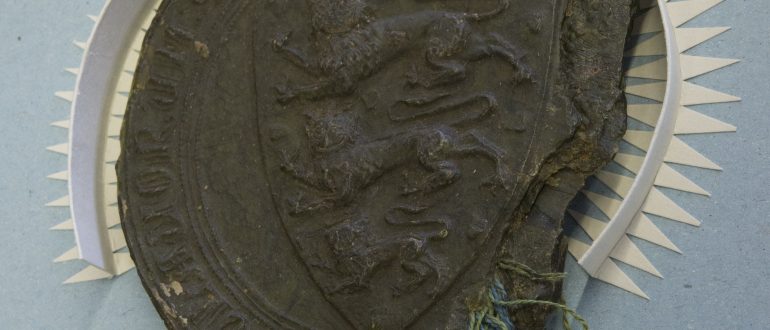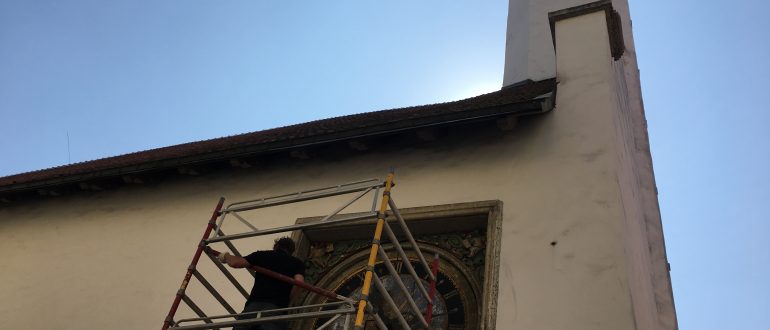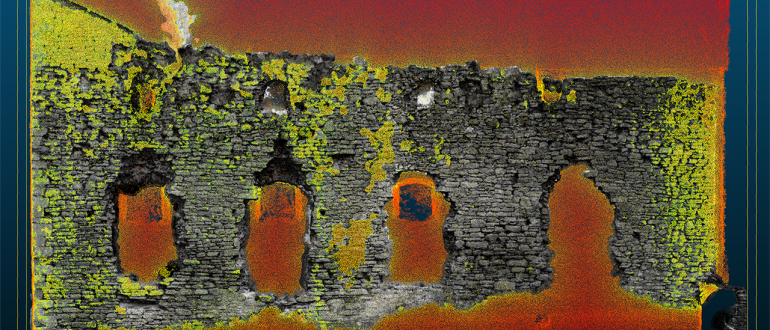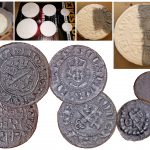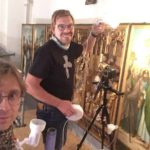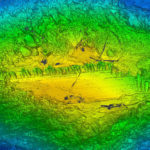Tartu Ülikooli muuseumi valmivale näitusele tegime kolmest unikaalsest mündist mõõdistuse, 3D mudeldamise, töötlust ja nii valmisidki väärtuslikest müntidest 3D prinditud koopiad. Mündid on pärit keskaegsest Tartust (Dorpatist): Tartu braktaat (u 1260. -1330. aastad); Johann I Vyffhusen, artig (1343-1373), Johannes VI Bey, veering (1533). Näitusega saavad külastajad tutvuda alates 13.12.2021 Väike väljavõte ka pildigaleriina.
Author Archive:
Seoses näituse “Dannebrog 800 – the story of Denmark in Estonia” kavandamisega oli põnev töö kahe üriku pitseri mõõdistamine, 3D mudeldamine ja 3D printimine. Mõlema pitserid on seotud nii Eesti kui Taani varasema ajalooga. Näitusele välja valitud pitseritega ürikud on aastatest 1302 ja 1780. Parima tulemuse saavutamiseks katsetasin ja testisin erinevaid meetodeid ja töövahendeid. Pitseritele…
Kui hilljuti olin Juuru kirikus ja turvaliselt maapinnal fotogramm-meetriat tegemas siis eelmine nädal olin juba märksa ebakindlamal tellingul 7m kõrgusel Püha Vaimu kiriku kella mõõdistamas ning pakkudes sadadele turistidele eraldi vaatamisväärsust.
Möödunud nädala alguses olime Juuru kiriku kantsli figuuridest tegemas 3D mudeleid.
Täna toimetasin Oleviste kirikus, mis on uurimisobjektina väga huvitav ja põnev, kuid tehnilisest vaatenurgast vajab hoonete kompleks mitmeid põhjalikke korrastustöid.
Novembri lõpus oli mei au seda nii oma mõõtmetelt kui tehnikalt põnevat tööd mõõdistada Dolores Hoffmannivast valminud Rahu kinno hiiglasliku freskotehnikas seinapannoo “Hommik”.
Muhu kiriku interjööri mudel on loodud pilootprojekti “Analoog fotogramm-meetria taaskasutus” raames. Selle mudeli loomise alusmaterjal on stereo fotogramm-meetrilise mõõdistuse käigus tehtud klaasplaatnegatiivid (pildistatud 1989 aastal, joonised lõplikult valminud 1992). Mudeli loomiseks oli sai kasutada kokku 55 klaasplaatnegatiivi. Kahjuks selle objekti kohta tehtud piltide osas on ca 1/3 kujutisi halvemini säilinud, mistõttu ka kvaliteet tuli madalam. 3D mudeli…
Padise kloostrist on vahepeal valminud ka 2017 aasta novembris tehtud kujutiste põhjal 3D mudel. Mõõdistus ei pretendeeri kõrgele täpsusele, pigem tutvustab võimalikke lahendusi, mida kaasaegsed meetodid võimaldavad. Mudeli tegemisel oli idee just maapinnalt tehtud fotode põhjal genereerida 3D mudel, mida saab siis võrrelda juba 1991 aastal tehtud kujutiste põhjal loodud 3D mudeliga. Kahjuks pole teada…
Archaeovision koos Euro G.V. (Tšehhi Vabariik) alustas käesoleva aasta septembris pilootprojekti raames koostööd Muinsuskaitseameti arhiiviga, et digiteerida klaasplaatnegatiividel olevat fotogramm-meetrilist mõõdistusmaterjali ning saadud tulemusi töödelda kaasaegsete fotogramm-meetriliste lahendustega. Selle väärtusliku klaasplaatnegatiivide kogu sisu on tänasel päeval avalikkusele kättesaamatu. Käesoleva projekti eesmärk on hinnata osaliselt selle kogu seisukorda, digiteerida ja väärtustada saadud tulemusi koheselt, elik taaskasutada…
Karuse kantsli trepirinnatise alumises nurgas on ülevärvimise ajal jäänud üks putopea hiljem kantsli külge ehitatud pingi taha ning säilitanud oma algse värvigamma. See ainus teadaolev originaalvärvides Ackermanni skulptuur, mis annab vähemalt mingi ettekujutuse kiriku sisustuselementide kunagisest baroksest värvierksusest. Siit saab vaadata puto fotogramm-meetrilist mudelit. Puto on pisut konstruktsiooni varjus, kuid erinevaid objektiive kasutades õnnestus koguda…

